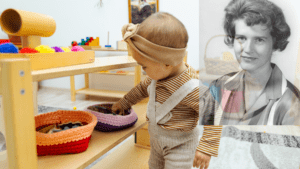Breastfeeding is one of the best methods for ensuring kid wellbeing and endurance. Breast Milk is the best nourishment for babies. It is protected, clean, and contains antibodies that help ensure against numerous normal infant diseases.
As stated by WHO – Breastmilk gives all the energy and supplements that the baby needs for the primary months of life, and it keeps on giving up to half or all the more a kid’s healthful requirements during the first year, and 33% during the second year of life.
Breastfed kids perform better on intelligence tests and IQ, and are less inclined to be overweight or corpulent. They are also less inclined to diabetes later in life. Ladies who breastfeed additionally have a diminished danger of breast cancer and ovarian malignant growths.
What is Breastfeeding?
Breastfeeding is when you feed your baby breast milk, for the most part straightforwardly from your bosom. It’s called nursing or lactation.
Settling on the choice to breastfeed is an individual matter. However, Pediatrics all across the world recommends that infants should be exclusively breastfed for the first 6 months and continue doing so for the year along with complementary foods. Still, most infants receive breastmilk not as exclusive as recommended and are also not fed for the defined duration.
Most mothers stop breastfeeding the child early due to a lack of support. Few factors impact the duration of breastfeeding. Continue reading to know the details on why breastfeeding is important.
Benefits of Breastfeeding for Infants and Mothers
Infants who are breastfed have reduced risks of a few diseases that are causing harm not only at the later stages of life but also are found in toddlers these days. A few of such illnesses are asthma, type-1 diabetes, obesity, sudden infant death syndrome (SIDS), and gastrointestinal disorders. Those babies who are being breastfed are on safer sides against these diseases. They build better immunity.
Breast milk is a balanced diet for infants that have almost a mix of required vitamins, protein, and fats. It has everything to help the baby the right way. Moreover, these nutrients can be easily digested. The breast milk also contains the antibodies that help the baby fight viruses and bacteria.
On the other hand, the moms who breastfeed their babies are at lower risk of breast and ovarian cancer. They have lower risk of getting type-2 diabetes and high blood pressure. Feeding the baby also creates a bond between the mom and the newborn. Furthermore, it also lowers the risk of osteoporosis in females.
Also Check: Raise Kids in Plastic-Free World
Feeding Duration
How regularly you ought to breastfeed your child relies upon whether your child leans towards little, incessant meals or longer feedings. This will change as the child develops. Babies regularly need to take care of feed every 2-3 hours. By 2 months, taking care of each 3-4 hours is normal, and by a half year, most children feed each 4-5 hours.
Each baby and every mommy is unique; breastfeeding is a satisfactory and a necessary act. Take your own call for this.
Taking Care
Precautions should be taken when feeding the baby during any kind of sickness and any kind of disease.
- Proper storage should be done of breast milk if the mom is not around to feed directly to the baby. Take the help of a child care expert.
- During vaccinations for both the baby and mom, proper precautions should be taken during the lactation period.
- Moms need to keep themselves updated with the facts about the breastfeeding practices and consult a pediatrician immediately if help is required.
Phases of the Breast Milk
Immediately after the birth, there is a yellowish, thick liquid that is named ‘first milk’ or colostrum. Though the quantity is not much, it is enough to provide enough nutrition to the baby. Colostrum also develops the proper digestive tract for the baby.
This first milk changes over time, maybe in a few days, and the second phase is called the Transitional Milk. And this turns to the third stage of milk, in the duration of 10 to 15 days after birth, and is called Mature Milk. The phases or the stages change as the nutritional demand of the baby increases.
Final Words
Breast Milk is ideal for the newborns and contains enough nutrients to build the immune system for the baby. The development in the first year is crucial and breastmilk supports the complete building block of the infant. Consult a child care doctor for the details. We will share more inputs on the topic in the further articles. Stay connected with earthy tots and be a gentle, green parent.




